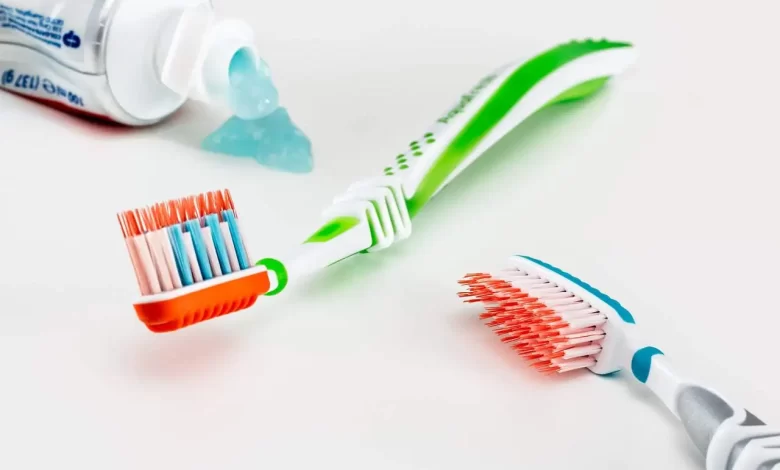Toothpaste Ingredients: A Comprehensive Guide for Oral Care Brands and Businesses

Essential Toothpaste Ingredients
Fluoride: The Powerhouse Ingredient
Fluoride is a mineral that stands as the cornerstone of effective toothpaste. It has long been recognized for its unparalleled ability to prevent tooth decay and strengthen tooth enamel. Fluoride works by remineralizing tooth surfaces, making them more resistant to acid attacks. Dentists worldwide recommend fluoride-containing toothpaste to maintain oral health, especially in children and individuals at risk of cavities.
Abrasives: Polishing Your Smile
Abrasives agents in toothpaste, such as calcium carbonate, hydrated silica, and aluminum oxide, help in cleaning and polishing the teeth. They play a crucial role in removing surface stains and plaque buildup, thus contributing to a whiter and cleaner smile. These ingredients must be carefully balanced, as excessive abrasiveness can lead to enamel erosion.
Binding Agents and Humectants
Glycerin: The Moisture Retainer
Glycerin is a common humectant in toothpaste, responsible for maintaining its consistency and preventing it from drying out. It ensures the toothpaste remains smooth and easy to squeeze out of the tube, promoting user-friendliness.
Cellulose Gum: The Stabilizer
Cellulose gum is often used as a binding agent in toothpaste. It helps maintain the toothpaste’s stability by preventing the separation of its ingredients. This is especially important in formulations that contain both water and oil-based components.
Flavoring and Sweetening Agents
Minty Freshness: The Role of Flavoring Agents
Toothpaste ingredients to avoid often include artificial flavoring agents, as they may cause allergic reactions in some users. Mint is the most popular natural flavor used in toothpaste, as it provides a refreshing sensation and promotes a clean feeling in the mouth.
Sweetening with Care: Xylitol and Sorbitol
Xylitol and sorbitol are common toothpaste sweeteners. They contribute to a pleasant taste and can also help prevent cavities by inhibiting the growth of harmful bacteria in the mouth. However, it is essential for toothpaste manufacturers to use these sweeteners in moderation to avoid an overly sugary product.
Preservatives and Stabilizers
Sodium Benzoate: The Preservative
Sodium benzoate is often added to toothpaste to extend its shelf life by preventing the growth of harmful microorganisms. This preservative ensures that the product remains safe for use from the day it’s manufactured to the day it’s used.
Titanium Dioxide: The Opacifier
Titanium dioxide is used in some toothpaste formulations to provide a white color and opacity. It enhances the product’s aesthetic appeal and may help mask the appearance of other ingredients that could be less visually appealing.
Toothpaste Ingredients to Avoid
Sodium Lauryl Sulfate (SLS): The Foaming Agent to Watch Out For
Sodium Lauryl Sulfate, a common foaming agent in toothpaste, but researchers have linked it to oral health concerns, such as canker sores, and skin irritations. For brands and businesses, considering SLS-free formulations may be a wise move to cater to those with sensitivities.
Microbeads: Environmental Hazards
Microbeads, tiny plastic particles used for exfoliation, were once popular in toothpaste, but many countries have banned them due to their detrimental impact on the environment. Oral care brands should be aware of the regulatory guidelines regarding such ingredients.
Best Practices for Toothpaste Manufacturers
Safety and Regulatory Compliance
Toothpaste manufacturers must adhere to strict safety and regulatory guidelines to ensure that their products are safe for consumer use. This includes compliance with FDA (Food and Drug Administration) and other relevant regulatory bodies in different countries.
Quality Control and Testing
Quality control is paramount in toothpaste manufacturing. Rigorous testing, both of raw ingredients and final products, is crucial to ensure consistency, efficacy, and safety. This includes microbial testing, stability testing, and sensory evaluations.
Sustainability in Toothpaste Manufacturing
Sustainability has become a major concern in the oral care industry. Brands are increasingly adopting eco-friendly practices, such as using recyclable packaging and reducing water usage during production. Toothpaste manufacturers should align with these sustainability trends to stay competitive and environmentally responsible.
Conclusion
In the world of toothpaste, ingredient choices are pivotal for success. Oral care brands and businesses must carefully consider what to include and what to avoid to create products that not only clean and protect teeth but also meet the needs and preferences of modern consumers.
By staying informed about the latest trends, adhering to best practices, and staying environmentally responsible, toothpaste manufacturers can continue to innovate and deliver high-quality oral care products.
Also read:
